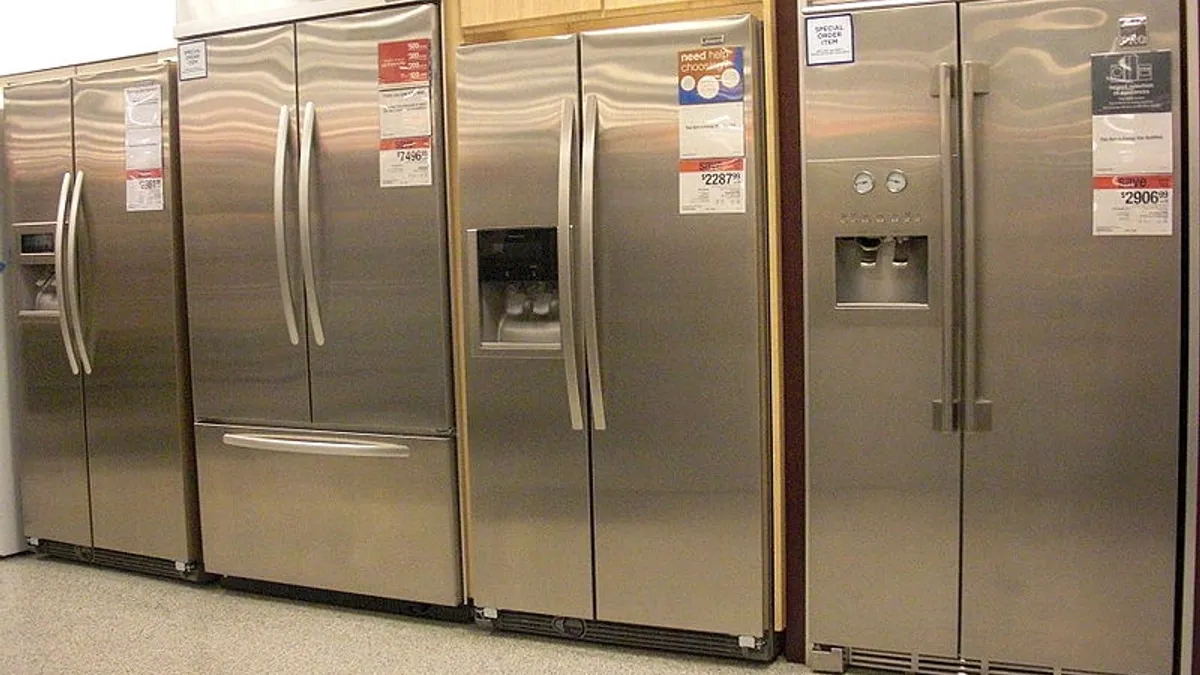Dive Brief:
- The U.S. Department of Energy on Friday finalized new energy efficiency requirements for residential refrigerators and freezers that the agency estimates will save consumers more than $36 billion over three decades.
- The new standards have support from product manufacturers and conservation advocates. The Association of Home Appliance Manufacturers, or AHAM, said the rules will save energy while preserving “choice and innovation.”
- DOE was under a legal settlement deadline to finalize the refrigerator standard by Dec. 30, capping a busy year for the agency’s appliance and equipment standards program. DOE said it issued 30 proposed or final energy efficiency standards last year.
Dive Insight:
DOE’s energy efficiency standards for refrigerators and freezers were last updated in 2011. The agency has been working through a backlog of overdue standards updates and said that effort will continue in the new year.
The agency “will continue to move quickly in 2024 — together with our industry partners and stakeholders — to update and strengthen outdated energy efficiency standards,” Secretary of Energy Jennifer Granholm said in a statement.
Energy efficiency standards advanced by the Biden administration will provide nearly $1 trillion in consumer savings over 30 years, DOE said.
The new energy efficiency standards will go into effect in January of 2029 or 2030, depending on the configuration of the refrigerator or freezer. DOE estimates the standards will result in cumulative emission reductions of nearly 101 million metric tons of carbon dioxide over 30 years.
“Refrigerator technology keeps improving, and today the standards are catching up to ensure every new model uses key energy-saving features,” said Andrew deLaski, executive director of the Appliance Standards Awareness Project. “It has been particularly encouraging to see the manufacturers embrace this continued significant progress.”
Manufacturers estimate the new standards will reduce the energy use in new refrigerators by 10-15%, depending on product type.
AHAM said it appreciated the consideration DOE gave to stakeholders’ recommendations in developing an “achievable standard that allows sufficient time for manufacturers to develop the innovations necessary to meet the new requirements.”
“The home appliance industry ... will continue working to find new ways to approach regulations that preserve historic efficiency gains while advancing innovation,” AHAM said.
Along with new final rules for refrigerators and freezers, DOE on Friday also published proposed energy efficiency rules for commercial fans and blowers, saying they would reduce annual energy costs for U.S. businesses by $3.3 billion. DOE wants the new rules to come into effect in 2029.














